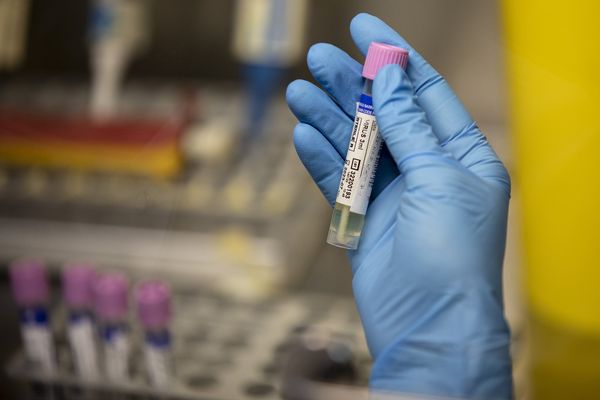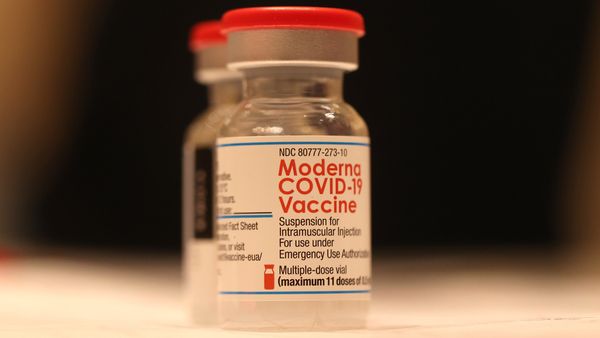The famous Robert Frost poem “The Road Not Taken” begins: “Two roads diverged in a yellow wood, / And sorry I could not travel both.” The United States and the rest of the world faced a fork in the road with two possible options at the outset of the COVID-19 pandemic: Attempt to control the spread of the virus through social measures and lockdowns or let the virus run its course naturally (“let it rip,” as some have referred to it) in the hope of inducing herd immunity in the populace.
Countries selected one path or the other, and neither strategy was completely successful. The “flatten the curve” approach in the U.S. failed to prevent virus spread and resulted in large numbers of COVID-19 and non-COVID-19 deaths while simultaneously damaging the economy and harming childhood education. The “let it rip” approach, employed by Sweden, produced marginally better results — roughly the same number of cases per capita as the U.S., less economic downturn and fewer excess deaths — but was hardly an unqualified success. (Deaths per capita are higher in Sweden than in the other Scandinavian countries.)
So, facing our next crossroad, as the sixth wave in the U.S. may be starting to wind down, how best to return to a “normal life”?
The COVID-19 virus has shown it is nimble in mutating, spreading and circumventing vaccine and acquired immunity. This makes the cost of attempting to suppress infections by once again closing schools and instituting lockdowns unacceptably high. Children have already suffered immeasurably, and lockdowns would further cripple the business sector. Nor would this likely work; even the draconian zero-COVID-19 measures of Communist China and North Korea have proved futile in the face of the current, extremely contagious variants.
Alternately, as new variants become more communicable but less severe (current COVID-19 mortality is 90% lower than it was in early 2020), we can hope this unprecedented rapid viral evolution results in a version of COVID-19 that resembles the common cold. Adapting to it would mean living with an illness we can treat and against which we can vaccinate and employ protective measures to help the immunocompromised, elderly and very young.
But this approach, while more practical, must not encourage individual complacency. A majority of the population may contract some form of the virus, but it is not a prospect to cheerfully anticipate. Besides the diminishing but still-present morbidity and mortality, the unresolved future repercussions of even trivial infections — long COVID-19 — remain a concern for those who become infected. We should still be careful how we live.
Right now, this makes decisions as routine as attending the theater or eating in crowded restaurants fraught with uncertainty. The government, which once advised the public on what to do and how to live, appears to have washed its hands of most responsibility and now seems to be leaving decisions largely to the public. But expert input would still be of immeasurable benefit in helping us live our lives.
In what venues should we mask? When should we test at home? What is the risk of attending a concert at Soldier Field? Granted, there is no consensus, and the recommendations will change over time, but we could still use some advice from the medical community about the COVID-19 risks of everyday life.
Meanwhile, there is certainly reason for optimism. Antiviral drugs will get only better, and new vaccines are being developed. A “universal” coronavirus vaccine could provide protection against the constantly changing COVID-19 variants. A nasal spray vaccine that induces high levels of antibodies at the nose, the main portal of viral entry into the body, might theoretically be safer and more effective than the current vaccine booster regimen.
While we await those advances, there is no role for complacency by the public. Those officials charged with COVID-19 management must improve case tracking to include the results of home testing, coordinate national and global surveillance of COVID-19 variants, and facilitate wastewater surveillance of the virus, which can be an early indicator of a COVID-19 variant or a generalized outbreak.
At the same time, the government should encourage home testing, optimize the path from testing to delivery of oral COVID-19 medications, fund the development of more comfortable and durable protective masks, and push for better ventilation in residential buildings, businesses and schools.
As we continue the battle against COVID-19 into the third year, recall the eloquence of Winston Churchill as the tide was turning in World War II: “This is no time for boasts or glowing prophecies, but there is this — a year ago our position looked forlorn, and well-nigh desperate, to all eyes but our own. Today we may say aloud before an awe-struck world, ‘We are still masters of our fate. We still are captain of our souls.’”
____
ABOUT THE WRITERS
Dr. Cory Franklin is a retired intensive care physician. Dr. Robert A. Weinstein is an infectious disease specialist at Rush University Medical Center.










